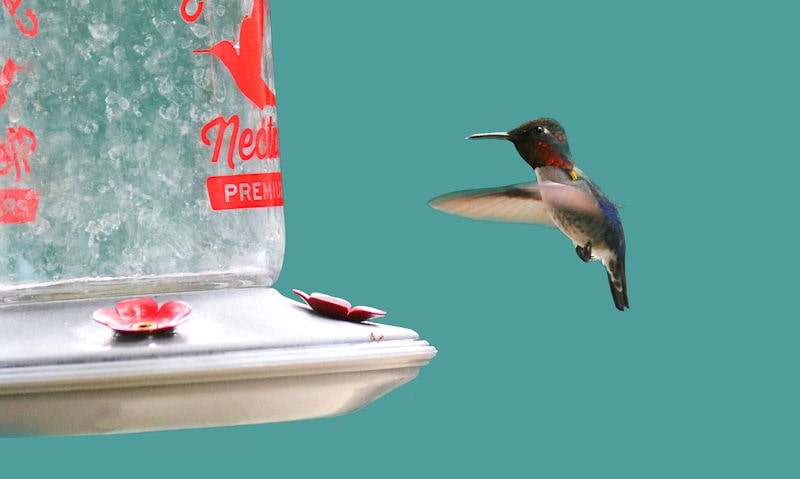Are Hummingbird feeders safe
With the use of nectar that is intended for vulnerable birds to drink, it can feel risky feeding hummingbirds this way, but with care and attention it can be done safely.
Hummingbird feeders continue to be a safe device to feed Hummers in your yard, though you are responsible for its upkeep. Nectar is prone to pathogens as it enter the feeder via hummers, birds or pests; thus its vital to change out nectar regularly, which can get ahead of cloudy nectar build up in the process.
What is the biggest concern of owning an hummingbird feeder for most of us, is the quality of the nectar of how long it can last, and what are the signs of unsafe sugar water.
Well, as a rule of thumb, as soon as the nectar begins to cloud up, this proves there's bacteria in the water which you must stop using ASAP, with no additional time for hummers to ingest.
How homemade nectar is made would usually involve boiling this mix to dissolve the mixture, but really its to kill off any contaminates in the process. Bacteria will instead arrive later in the nectar, as hummingbirds, other birds, plus pests spread germs.
How to prevent hummingbirds sipping on nectar with bacteria in it, is to be sure the nectar is changed out as often as you possibly can.
Of course an unkempt feeder with a filthy exterior can assist in the spreading of germs, thus to clean the feeder along with a regularly nectar-change, is vitally important.
How to clean the hummingbird in the safest manner is to use a homemade disinfectant, which can be one of a vinegar or bleach solution.
Cleaning hummingbird feeders will involve completely disassembling it, which can guarantee a thorough clean; along with a focus on the port wells which is an area that can result in the build up of mold developing.
Hummingbirds feeders aren't bad to use at all, you just need to be mindful of germs spreading on the exterior, with bacteria absolutely getting in the nectar, sooner or later.
In addition, Hummingbird feeders will begin to leak if they aren't kept to a high standard, thus its important to maintain feeders regularly to prevent these kinds of issues arising.
Unsafe due to unkempt feeder
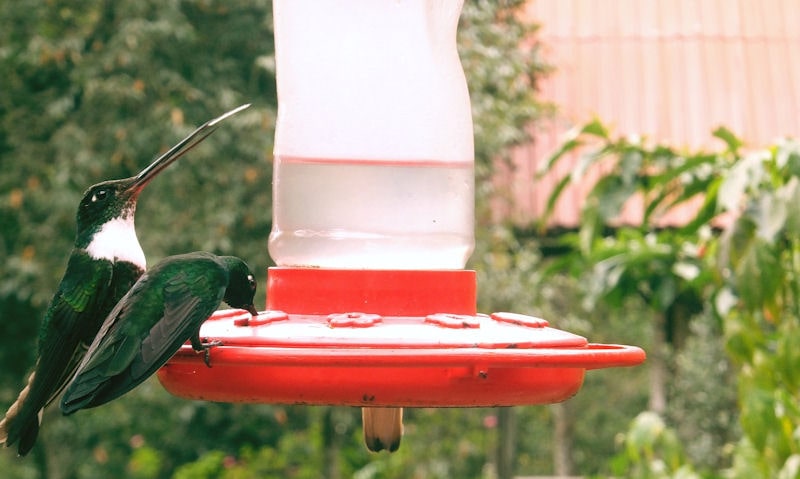
Hummingbird feeders can be a dangerous device for hummers to come into contact with if, the feeder is not properly cleaned on a regular basis.
Unkempt hummingbird feeders can develop all kinds bacteria, to which would lead to hummers dying as they would be poisoned at the feeder, but die a painful death later.
To clean your hummingbird feeder as regularly as you can will prevent the development of bacteria forming. In addition, this would coincide with a regular change of homemade nectar, replaced at the same time or more regularly.
Hummingbird feeders in general are super safe, recommended by Audubon as a bird feeder to use in your yard.
Just be responsible when operating it during your hummingbirds visit, then there should be no issues at all developing early on, or later.
As a reminder, hummingbird feeders can develop all kinds of bacteria in summer months in rapid growth, thus its vital feeders are taken care of as soon as they are put up in early spring, ready for the arrival of your local hummingbirds.
Sugar-water cause of pathogens
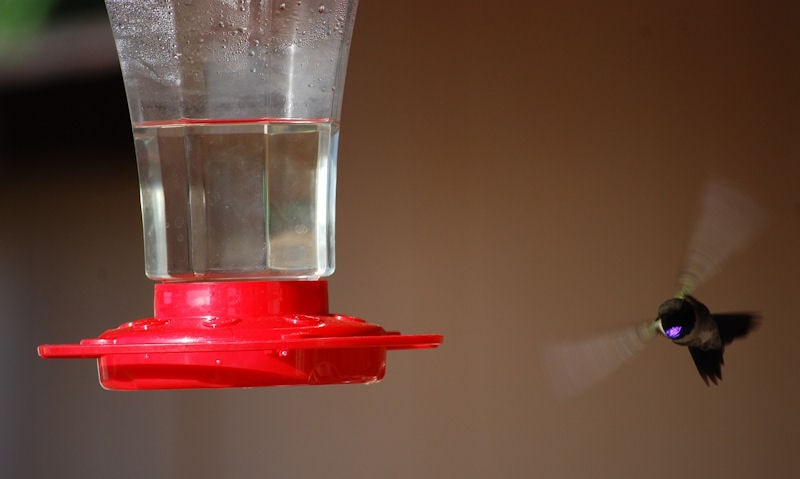
What can really make a hummingbird feeder unsafe, other than unkempt feeders, is the spread of all kinds of pathogens.
Pathogens are forms of bacteria that can develop in the liquid - of what is homemade nectar - due to hummingbirds, other songbirds and pests spreading bacteria in and around the feeder.
Rather than wild birds spreading bacteria in the nectar itself, its actually possible bees and wasps, and even ants can spread pathogens. With that, utilize a hummingbird feeder with an ant moat included, plus a bee guard at all available port wells.
Why its important to clean a bird feeder regularly would be to kill off any bacteria on the body of the feeder, whilst the sugary water is often overlooked.
When cleaning the hummingbird feeder comes around, its vitally important to change the nectar far more often.
Pathogens in the liquid can leech onto the plastic or glass bottle interior, thus its important to always clean the feeder before adding new nectar - homemade or store-bought - as you can do that with a little vinegar to disinfect the feeder interior.
Feeder itself remains safe
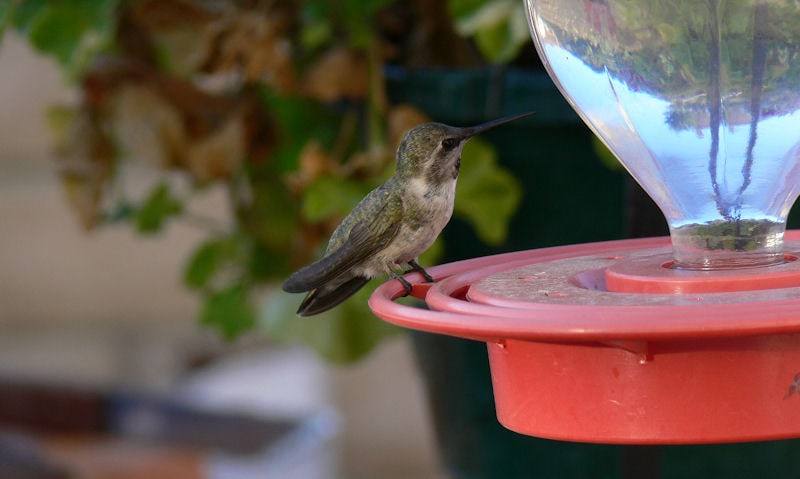
Overall, your hummingbird feeder itself is a safe and secure way to feed hummingbirds in your backyard, but only if you can maintain a regularly cleaning routine.
Without it the red body of the feeder - which mostly applies to plastic feeders - will see visible signs of a messy exterior. In addition, the port wells where hummingbirds sip nectar out of, will gradually become black around the rim.
Black in color, this would actually be signs of mold forming on the feeder port, as mold will develop in conditions that remain damp.
Clean your hummingbird feeder as often as you can, then mold wouldn't be given a chance to grow - as soap with vinegar or a part bleach solution does the trick.
When cleaning hummingbird feeders you'll find more time is needed to thoroughly clean the ports, as its prone to dirt or stains, with the only place mold tends to grow.
Sugar in the nectar can be responsible for all kinds of health issues, among them it can cause the hummingbird feeders body to fade in color, or change color due to corrosion.
Hummers vulnerable at wells
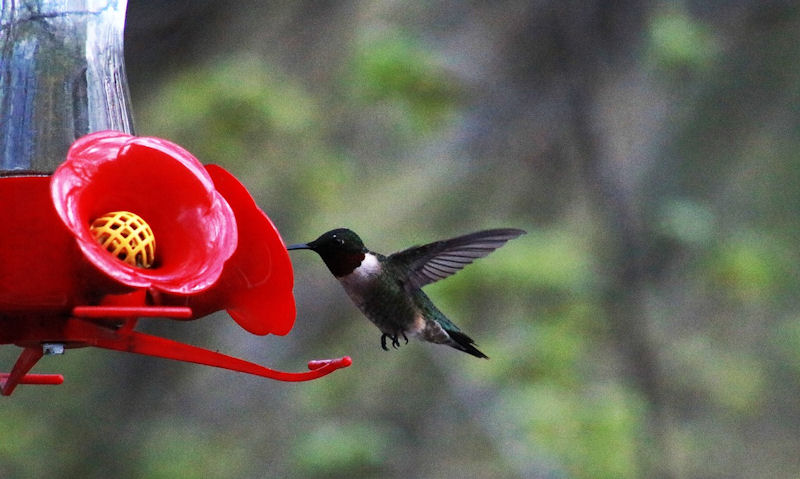
Talking of the hummingbird feeder ports, these are known as port wells of which the nectar is sipped on by hummingbirds.
Unfortunately, conditions in and around these wells can be responsible for mold and the the spread of pathogens, in which I have previously gone over.
Of all things to take care of then, extra attention would be needed on keeping the port wells, well maintained throughout the hummingbird feeders lifetime.
Hummingbirds sip the nectar with their tongues, of which they will hopefully always pick up nice, fresh clean nectar - or if some time has passed - they risk ingesting bacteria.
I can't emphasis it enough, take extra care in and around the port wells, but don't neglect the feeders overall upkeep.
Hummers will be vulnerable at the wells but so will other wild birds who tend to raid a hummingbird feeder, so its needed to look after the health of many common backyard birds who risk becoming unwell.
Dangers of cloudy water
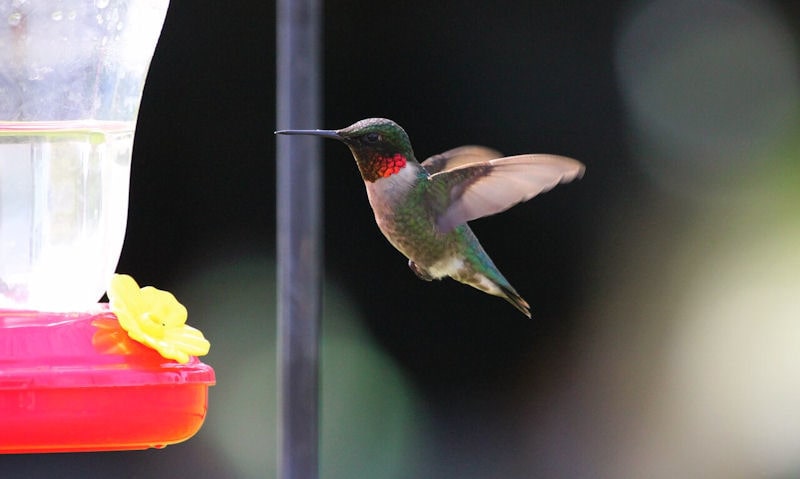
With all the safety issues involving hummingbird feeders thus far, it can get a little more complicated when it comes to cloudy nectar.
So what is a cloudy hummingbird feeder and how does it effect hummingbirds exactly?
Well, for one thing, when hummingbird sugar water goes cloudy, its a sure sign of the nectar going bad, with the culprit being bacteria slowly developing.
Certainly is it possible sugar water will go cloudy-like which isn't related to bacteria, as this can be blamed on condensation clouding up the plastic or glass bottle interior - and that can be noticeable bubbles building up.
When bacteria is certain to be in the hummingbird feeder with a cloudy mist, its time to change the feeder nectar. Well, in fact its time to change the nectar long before its gets to this dangerous stage.
Hummingbirds can ingest this bacteria-riddled nectar as they insert this tongues in the feeder wells to sip water, and this is what you must avoid at all costs.
Cleaning can prevent mold
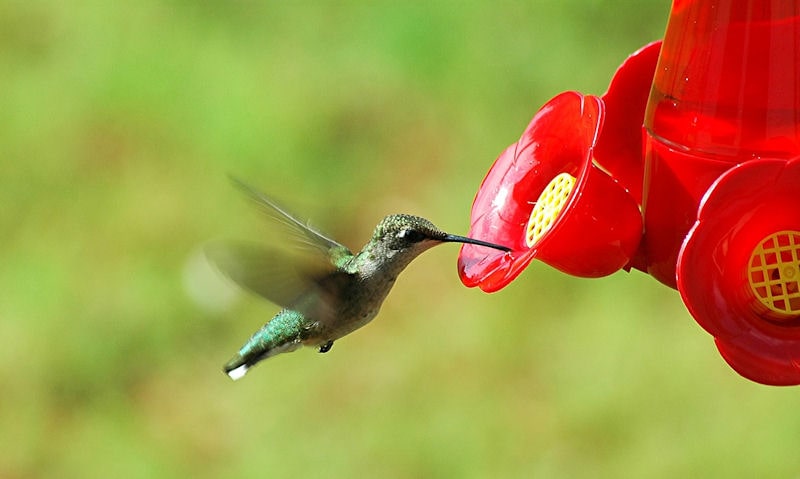
Hummingbird feeders are prone to all kinds of germs and bacteria without a doubt, so how we'd go about preventing that is to clean the feeders as often as you possibly can.
Don't wait until there's sign of dirt, cloudy water or mold developing anywhere on or within the feeder, just clean it at least once a week.
On the subject of mold growing on hummingbird feeders, this is something else which can lead to hummingbirds becoming poorly if coming into contact with it.
Why hummingbird feeders get moldy is because they're constantly in contact with a wet substance, which as you may know is the catalyst for mold to develop.
Mold can be avoided if the hummingbird feeder is cleaned long before the mold has time to develop; this is the most important responsibility of owning and operating a sugar-water filled hummingbird feeder.
When cleaning your hummingbird feeder it will force you to concentrate your cleaning efforts in and around the wells, which is why manufacturer's like Perky-Pets allow you to pop the wells in and out to maintain.
Clean feeders with a simple dish soap to remove exterior grime build up, providing you utilize an homemade bleach or vinegar disinfectant solution to kill 99% of bacteria.
To summarize
As you may know by now after owning a hummingbird feeder for a whole year at least, it comes with a lot of issues you must overcome.
Safety concerns surrounding an hummingbird feeder in regard to grime build up is expected and easy to get rid of with a regular clean. Downside is the sugar water, which is commonly a homemade solution - must remain at its very best quality to avoid making hummers unwell.
Nectar inside the hummingbird feeder can be highly vulnerable to pathogens, which are brought to the feeder via hummers, other birds and insects if you'd believe it.
Hummingbird feeders remain safe to use despite all that, just as long as you continue to change out the nectar far more than than you would normally clean it.
On cleaning the hummingbird feeder, of course to remove exterior grime riddled with bacteria, can stop the spread of germs on the feeder body - or at least it will slow down the spread of bacteria.
Safety of a hummingbird feeder all comes down to nectar quality, with a real focus on fresh, clean nectar.
And with that, put all your efforts into keeping the wells where hummingbirds dip their tongues in, as its here where bacteria is ingested.
Hummingbird feeders overall remain completely safe to use, providing you are prepared to clean it often to remove all kinds of grime and mold.
With that, in time the nectar can appear cloudy which is a sign of bacteria growth, thus its vitally important to change the nectar long before and after the feeder is cleaned.
